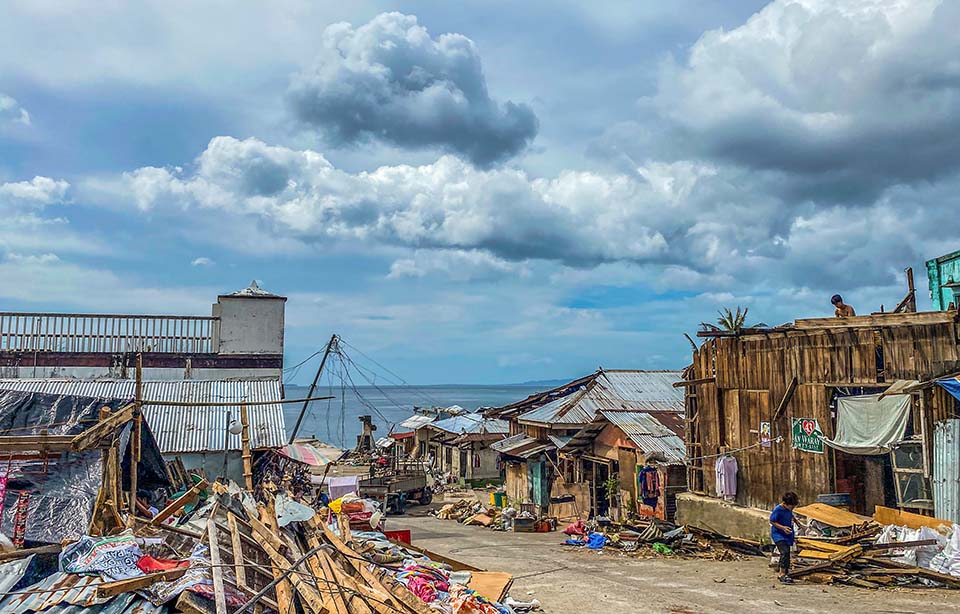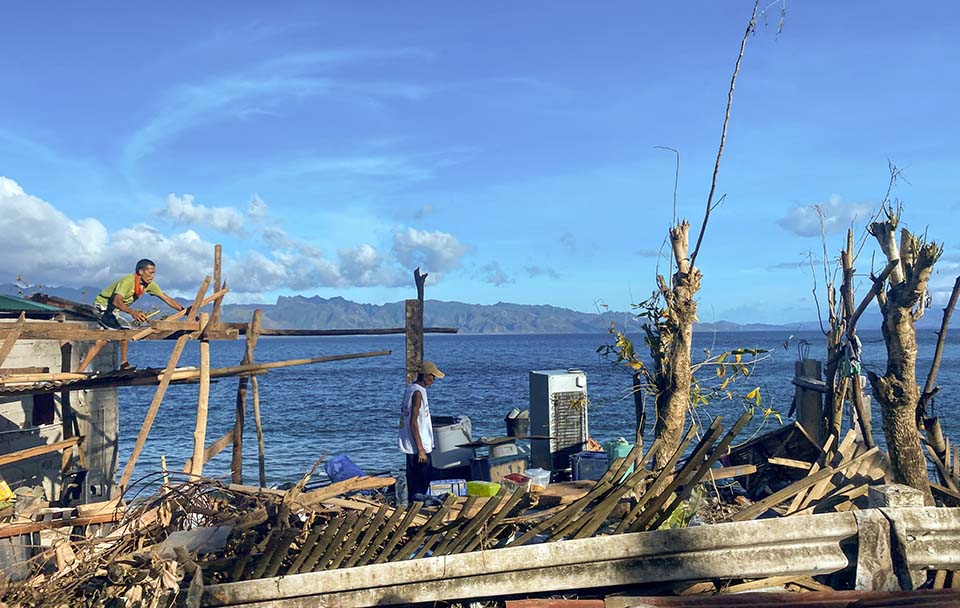Global Food Crisis—CRS has identified 25 priority countries that are affected by high levels of acute food insecurity and malnutrition due to combinations of these drivers, which are expected to continue through 2024. Areas of urgent concern include East Africa and the Sahel, as well as Central America, Southern Africa and, more recently, Gaza.


Global Emergency Update February 2022
PHILIPPINES TYPHOON RAI
Families begin the long road to recovery after Typhoon Rai devastated homes, infrastructure, crops and water sources.
CONTEXT
Families and communities in the Philippines are reeling from the devastation caused by Typhoon Rai, known locally as Typhone Odette, which made landfall on December 16. With windspeeds up to 160 miles per hour, Typhoon Rai made a total of nine landfalls across seven provinces, affecting 9 million people. Hundreds of thousands of people were displaced, with 80,000 people still taking refuge inside crowded evacuation centers. The most damage to homes occurred during storm surges along coastal areas.
As roads continue to be cleared, the devastation is widespread: downed communications, damage to crops, water sources and city infrastructure, including seaports and airports. A total of 1.7 million homes have been damaged, of which 415,000 are destroyed. A majority of the water networks are severely affected in Maasin City, the capital of Southern Leyte. Distribution lines are damaged while reservoirs are potentially contaminated. Water supplies are dwindling as people wait in long lines at the few water refilling stations that remain open. On the outskirts of the city, families are collecting drinking water in springs and the potability can’t be ascertained. Many are also facing severe reduction in income due to damaged boats and crops.
At least 405 people died in the storm—a toll that could increase as more communities are reached. The most affected provinces are Surigao del Norte, Southern Leyte, Bohol, Negros and Cebu.

A majority of displaced families spend their days at the site of their damaged homes to recover their belongings and determine next steps for rebuilding, while they spend their nights in crowded evacuation centers.
Photo by Pathy Rose Aborque/ CRS
CRS/PARTNER RESPONSE
Catholic Relief Services and our partners have carried out assessments to identify priority needs for support in Southern Leyte and Surigao provinces, two of the hardest-hit areas. Based on initial assessments, CRS and our partners are prioritizing efforts to provide:
- Emergency shelter supplies, including shelter kits with tarps and materials for repair, as well as cash assistance for labor.
- Safe and adequate drinking water through the repair and rehabilitation of contaminated water sources, distribution of sanitation and hygiene supplies, and provision of clean water via trucks, taps and other means.
- Ready-to-eat food distributions for families who are displaced, have lost their assets and income and are in need of immediate food to feed their families.
Longer-term plans for recovery will focus on the repair and rebuilding of homes and infrastructure, rehabilitation of water systems, and recovery of livelihoods, in addition to other critical needs for recovery. CRS is coordinating with regional and provincial governments, as well as diocesan social action centers. CRS and our partner staff members have extensive experience responding to natural disasters and emergencies in the country.

Family members in the Philippine province of Southern Leyte return to what remains of their homes and livelihoods. Typhoon Rai destroyed a reported 762,005 homes across the Philippines, heavily affecting fishing communities in the coastal areas.
Photo by Pathy Rose Aborque/ CRS
We work closely with affected families and communities to ensure their leadership and engagement in emergency efforts so that our support is as relevant, meaningful and sustainable as possible. Woven throughout our work are efforts to uphold and address protection and safety issues for the most vulnerable, including women, children and those living with disabilities.
“CRS staff and partners are assessing the damage caused by Typhoon Rai. We have prepositioned 10,000 emergency shelter kits, 2,000 water purification kits, 1,700 hygiene kits and 1,700 cooking kits for distribution in hardest-hit areas,” says Karen Janes Ungar, CRS country representative for the Philippines.
“We are concerned for those in coastal areas, particularly elderly, children and the disabled. We are also concerned about the safety of families in evacuation centers especially since COVID-19 continues to be a threat,” she says.
CRS is partnering and coordinating with Caritas Philippines together with the Dioceses of Palo, Maasin, Butuan and Surigao. CRS is also coordinating with the United Nations and the Mindanao Humanitarian Country Team.
We are concerned for those in coastal areas, particularly elderly, children and the disabled. We are also concerned about the safety of families in evacuation centers, especially since COVID-19 continues to be a threat.
—Karen Janes Ungar, CRS country representative, Philippines
PREPARING FOR DISASTERS
Hours before Typhoon Rai’s landfall, CRS’ partner Caritas Philippines and local churches worked with governments in evacuations and early warning dissemination.
"Government preparations and community evacuations ahead of the typhoon helped save many lives," says John Rezel Day, manager of CRS Emergency Programs in the Philippines. "But, there’s so much to be done for aid to reach thousands who are reeling from Rai’s extensive destruction."
Since 2015, CRS has invested in strengthening local government emergency preparedness for high-risk barangays, or districts, in and around Metro Manila to increase family resilience to flooding and earthquakes. Program activities focus on building technical capacity at the city or municipal level, improving coordination at the watershed level, and supporting families to develop preparedness plans, including with strengthened savings and financial stability.
CRS has previously helped barangay disaster risk reduction and management councils to build capacity to activate task groups during emergencies, and assisted them with making contingency plans for flooding.
Download & Print Global Emergency Update English Global Emergency Update
Recent Global Emergency Updates
February 2024
Ukraine War: Two Years of Emergency Relief and Recovery—In February of 2022, Russia invaded Ukraine, causing massive destruction and loss, separating families and uprooting millions of people from their homes. Over the past two years, Catholic Relief Services has worked with Caritas and other partners across Ukraine and the region to provide a range of support to meet people’s urgent needs for food, shelter, living supplies, medical care and counseling.
January 2024
Emergency Response in the Holy Land—Catholic Relief Services and our partners are responding to immediate needs of families facing hunger and displacement in the Holy Land.

